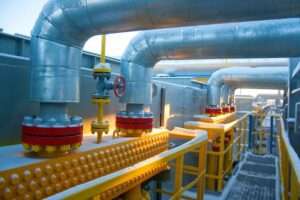In a significant stride towards environmental protection and gas leak detection, scientists have made a groundbreaking discovery in catalyst technology. This development could revolutionize the way natural gas leaks are detected and addressed, offering an innovative and efficient solution to curb emissions and enhance safety measures. In this article, we delve into the details of this discovery and its potential impact on the industry.

A new catalyst has been developed that can be used to detect and prevent natural gas leaks. The catalyst, which is made of a metal-organic framework, is able to react with methane, the main component of natural gas, to produce a signal that can be detected by sensors.
The Challenge of Gas Leak Detection
Natural gas leaks pose a substantial environmental and safety concern. Identifying and locating these leaks promptly is crucial to preventing potential hazards and minimizing greenhouse gas emissions. Traditional detection methods have limitations in terms of accuracy and efficiency, making the need for a more advanced approach imperative.
The Catalyst Breakthrough
Scientists have developed a novel catalyst that exhibits remarkable sensitivity to specific compounds found in natural gas. This catalyst can facilitate the conversion of these compounds into easily detectable substances, enabling rapid and accurate identification of gas leaks.
Enhanced Sensitivity and Selectivity
The catalyst’s enhanced sensitivity and selectivity make it capable of identifying even trace amounts of gas leaks, which might otherwise go unnoticed. This breakthrough offers the potential to revolutionize current gas leak detection technologies, providing a more comprehensive and reliable solution.
Environmental Benefits
Detecting and repairing natural gas leaks promptly is crucial for mitigating their impact on the environment. By using the advanced catalyst, industries can significantly reduce methane emissions and contribute to a cleaner and greener future.
Safety Advancements
Gas leaks can pose severe safety risks, and the new catalyst technology can play a crucial role in enhancing safety measures. With its ability to quickly detect leaks, potential hazards can be addressed in a timely manner, protecting both human lives and property.
Industry Applications
The discovery of this catalyst technology has far-reaching implications for various industries, including oil and gas, transportation, and manufacturing. Implementing this technology in pipelines, storage facilities, and other critical infrastructure can bolster safety standards and operational efficiency.

Some Interesting Facts :
- What is a natural gas leak catalyst?
- How does a natural gas leak catalyst work?
- What are the benefits of using a natural gas leak catalyst?
- What are the challenges of using a natural gas leak catalyst?
- What is the future of natural gas leak catalysts?

The groundbreaking discovery of the catalyst technology for natural gas leak detection marks a significant milestone in environmental conservation and safety enhancement. By providing a highly sensitive and selective approach to identifying gas leaks, this innovation has the potential to transform the industry’s approach to emissions reduction and safety measures. As industries embrace this cutting-edge technology, we move closer to a more sustainable and secure future, safeguarding both the environment and the well-being of communities around the world. Natural gas leak catalysts are a promising new technology for detecting and preventing natural gas leaks. The catalysts are very sensitive to methane, they are selective for methane, and they are stable. As the use of natural gas continues to grow, the demand for natural gas leak catalysts is also expected to grow.
